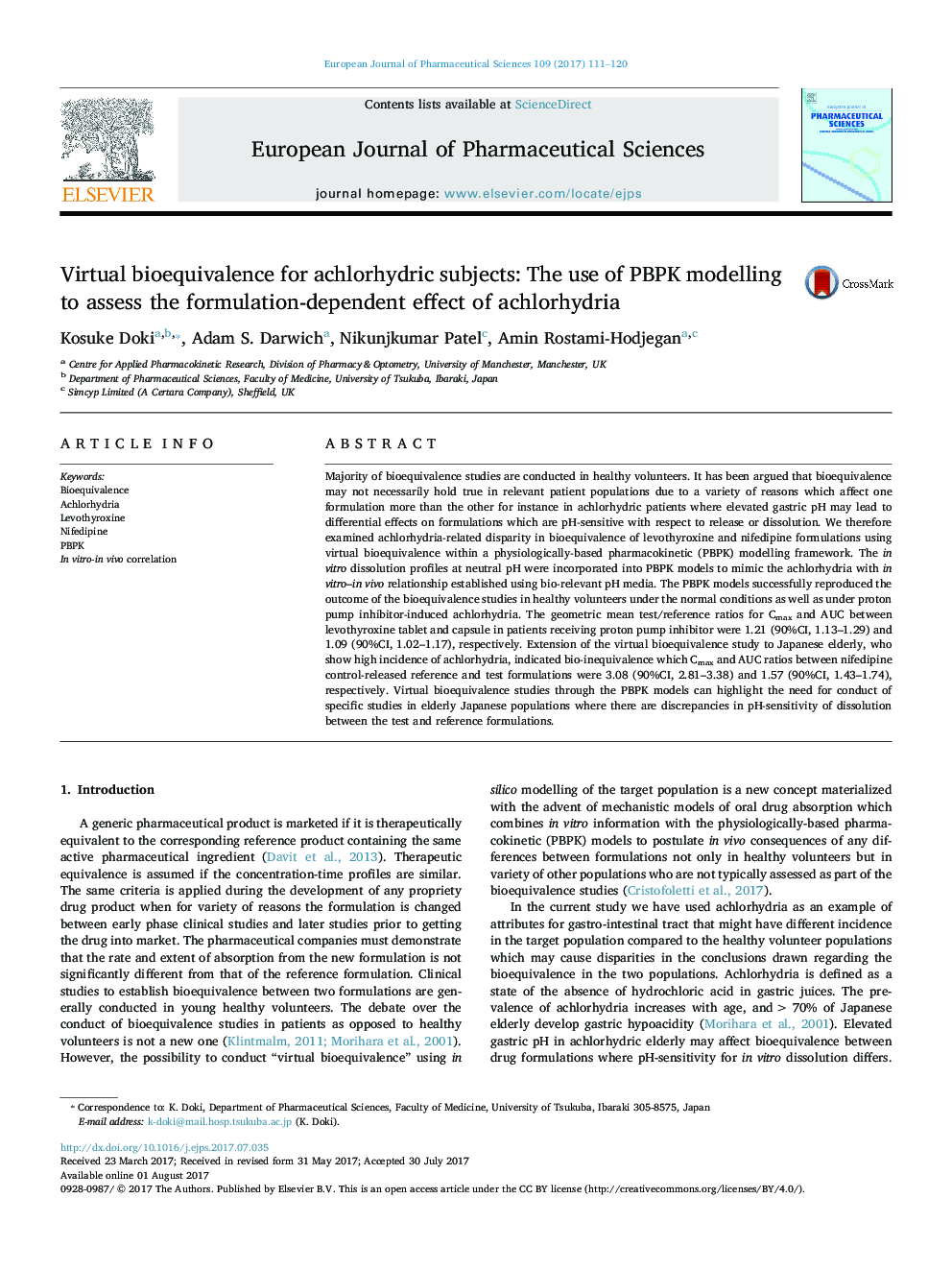| Article ID | Journal | Published Year | Pages | File Type |
|---|---|---|---|---|
| 5547538 | European Journal of Pharmaceutical Sciences | 2017 | 10 Pages |
Majority of bioequivalence studies are conducted in healthy volunteers. It has been argued that bioequivalence may not necessarily hold true in relevant patient populations due to a variety of reasons which affect one formulation more than the other for instance in achlorhydric patients where elevated gastric pH may lead to differential effects on formulations which are pH-sensitive with respect to release or dissolution. We therefore examined achlorhydria-related disparity in bioequivalence of levothyroxine and nifedipine formulations using virtual bioequivalence within a physiologically-based pharmacokinetic (PBPK) modelling framework. The in vitro dissolution profiles at neutral pH were incorporated into PBPK models to mimic the achlorhydria with in vitro-in vivo relationship established using bio-relevant pH media. The PBPK models successfully reproduced the outcome of the bioequivalence studies in healthy volunteers under the normal conditions as well as under proton pump inhibitor-induced achlorhydria. The geometric mean test/reference ratios for Cmax and AUC between levothyroxine tablet and capsule in patients receiving proton pump inhibitor were 1.21 (90%CI, 1.13-1.29) and 1.09 (90%CI, 1.02-1.17), respectively. Extension of the virtual bioequivalence study to Japanese elderly, who show high incidence of achlorhydria, indicated bio-inequivalence which Cmax and AUC ratios between nifedipine control-released reference and test formulations were 3.08 (90%CI, 2.81-3.38) and 1.57 (90%CI, 1.43-1.74), respectively. Virtual bioequivalence studies through the PBPK models can highlight the need for conduct of specific studies in elderly Japanese populations where there are discrepancies in pH-sensitivity of dissolution between the test and reference formulations.
Graphical abstractDownload high-res image (152KB)Download full-size image
